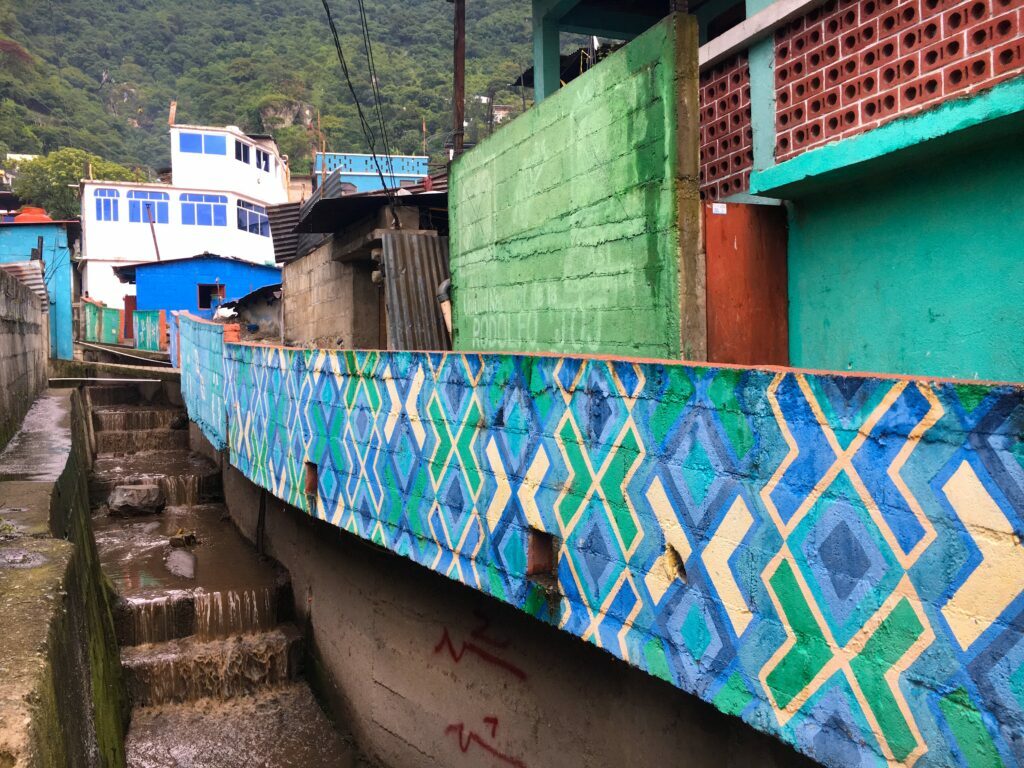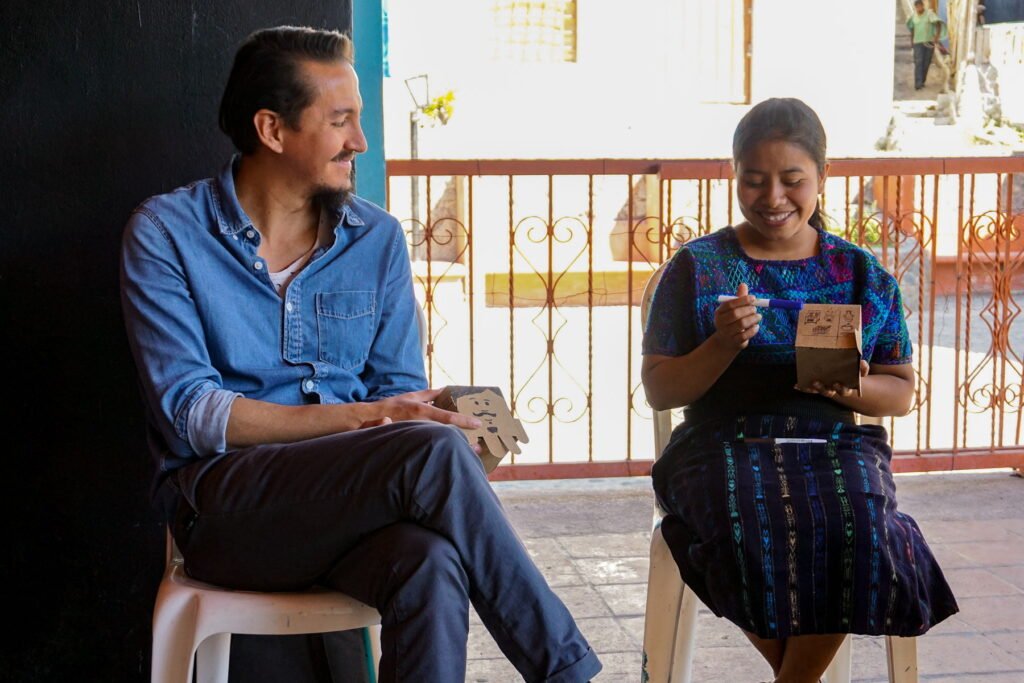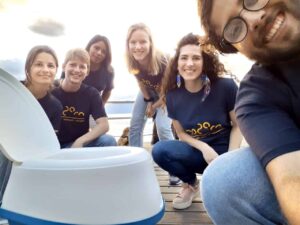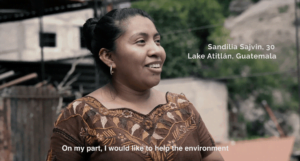Our article “Combining Circularity and Participatory Design to Address Sanitation in Low-Income Communities” gives an overview of the state of the world’s sanitation and brings insights on the potential and limitations of the Container based Sanitation (CBS) solutions.
The health and environmental impact of unsafe sanitation affects more than half of the world’s population. The lack of access to safe sanitation affects disproportionately rural populations in low- and middle-income countries, where progress is also shown to be slower. The sheer scale of the problem, combined with the variability of climate, geographies, and socioeconomic conditions, requires a variety of adaptable, scalable, centralized, and decentralized solutions working cohesively.

Encouraging market-based approaches is one way of facilitating the inclusion of the whole sanitation chain into sanitation solutions. Identifying opportunities of economic gain as the revalorization of waste products can be a financial incentive and offset some of the sanitation-associated costs.
Historically, market-creating innovations have catalyzed institutional change, which normally act as an adaptive response to the changing environment. Therefore, it is likely that the more examples of private, market-based sanitation approaches demonstrate scalability and impact the more governments will create an enabling environment for them to operate (..). Spurring and sustaining these innovations and their diffusion would certainly require a combination of efforts of multiple sector stakeholders, cooperation, advocacy, and adequate financing.
The transition from Millennium Development Goals (MDGs) to the Sustainable Development Goals (SDGs) granted the water and sanitation sector greater prominence. With this renewed focus, sanitation is positioned as both a public and environmental health matter, sustainable management of the sanitation chain becoming equally important as access to the service itself.
In low-income areas, most valued innovations tend to be those that offer instant gratification or directly increase the income-generating capacity. Sanitation however has a longer-term effect on the well-being of the families, generating benefits that are not always perceived as being correlated with it, such as less disease, more security and dignity, and increased school attendance. Therefore, sanitation entrepreneurs need to go a step further into creating their market, namely, a real demand among end-users for their innovation.
Traditionally, governments think of sanitation as an infrastructure investment with high capital cost and smaller maintenance and operation costs. The fact that CBS cost structure is completely different leads to the perception that it is more expensive than the alternatives. Plus, this also means that government budgets and contracts are not adapted to these types of cash flows and investments. To incentivize the formation of public–private partnerships, blended finance, outcome-based financing, and other SDG targeted financial instruments should be leveraged.
The recognition in 2018 of CBS by the Joint Monitoring Programme, the World Health Organization (WHO), and UNICEF’s platform that monitors global WASH progress, as a type of improved sanitation, has been an important step in creating an enabling environment for these types of services to grow.
The article also explores the details of how, at Mosan, we are closing cycles and applying participatory design principles to enable community engagement and raise awareness, while providing a safe sanitation solution to people who most need it.
Mosan’s concept grew from the vision of giving people a safe, and affordable sanitation service that is easy to use and install. The goal is to provide a dignified and attractive sanitation solution that is perceived as modern progress and not associated with old-fashioned dry alternatives as pit latrines.
In the lake basin of Lake Atitlán, where Mosan currently operates, about 250 thousand individuals live in 18 municipalities, of which more than 95% are indigenous and belong to different Mayan ethnic groups. With a poverty rate of 81% and an extreme poverty rate of 40%, providing affordable improved sanitation in the region remains a challenge.
Biochar can improve soil properties, and it has also been recognized by the Intergovernmental Panel on Climate Change (IPCC) as a viable and scalable carbon sequestration measure. Multiple studies have shown the potential of biochar to improve soil health.
Mosan was designed as a community-scale, decentralized, replicable solution. Mosan’s strategy is to scale via social franchising, seeking to enable community-led services, thus maximizing its social and environmental impact.

The participatory design applied by Mosan is a collaborative approach in which Mosan members and other stakeholders work together with members of the impacted community to design appropriate solutions (..).To facilitate participatory processes, it is important to recognize the differences in types of knowledge and power dynamics existing among people and groups. Participatory design shows and challenges those power structures to create a more democratic process that includes those who are usually marginalized and excluded from decision-making.
The Mosan solution is also designed to enhance climate and social resilience for vulnerable communities — for situations such as floods when other sanitation systems are rendered unusable.
Pyrolysis was chosen for the Mosan feces transformation since through pyrolysis, pathogens are removed, which makes it safe to handle and decreases the contamination risk. At the same time, key nutrients as phosphorus and potassium are retained in the biochar providing fertilizer value. It also requires little time and space for transformation and can be done with low-tech equipment.

Through its operation, the Mosan system has the potential to contribute to climate change mitigation through the prevention of methane emissions by safely containing excreta. Methane has an 80 times higher greenhouse warming potential compared to CO2 on a 20-year timeframe.
As technological solutions alone will not bring the shift in communities needed to tackle complex challenges, an essential part of Mosan’s mission is to enable local populations to participate in the innovation process, thus creating shared ownership and responsibility over the sanitation solution and fostering creativity and problem-solving capacities.
Decades of research have shown that mindsets, as the thoughts, beliefs, and assumptions that influence how we respond to situations, have the ability to influence learning, achievement, and motivation, which in turn branch out in numerous traits and attitudes that alter behaviors. Mindsets are paramount in laying the foundation for participatory design and are the real agents of change that create lasting community transformation. There are specific mindsets embodied and promoted at Mosan that reflect the culture of the organization: inclusion (..), curiosity (..), optimism (..), flexibility (..), connection (..).
Read more about it here on Springer.
Mijthab, M., Anisie, R. & Crespo, O. Mosan: Combining Circularity and Participatory Design to Address Sanitation in Low-Income Communities. Circ.Econ.Sust. 1, 1165–1191 (2021). https://doi.org/10.1007/s43615-021-00118-w


